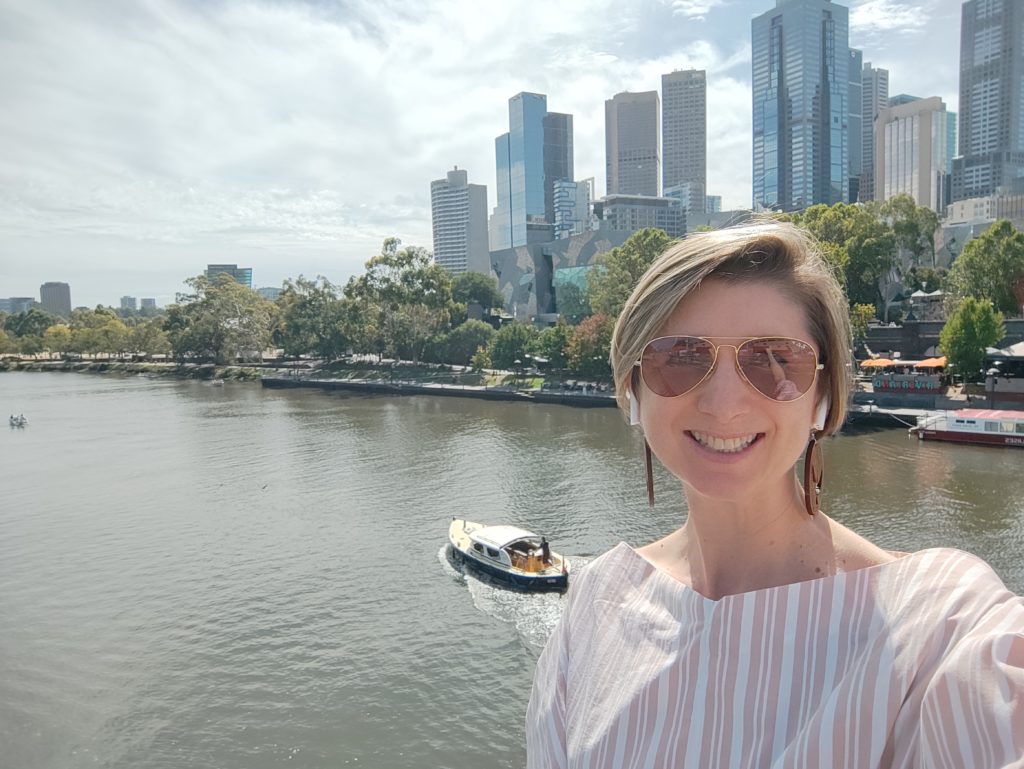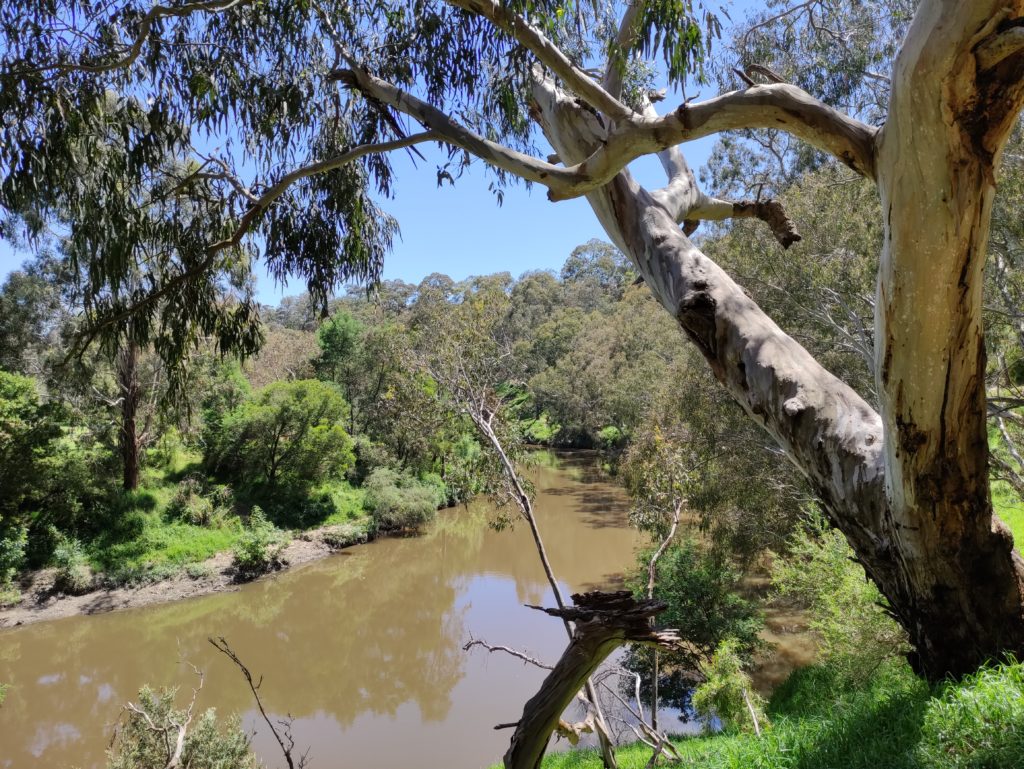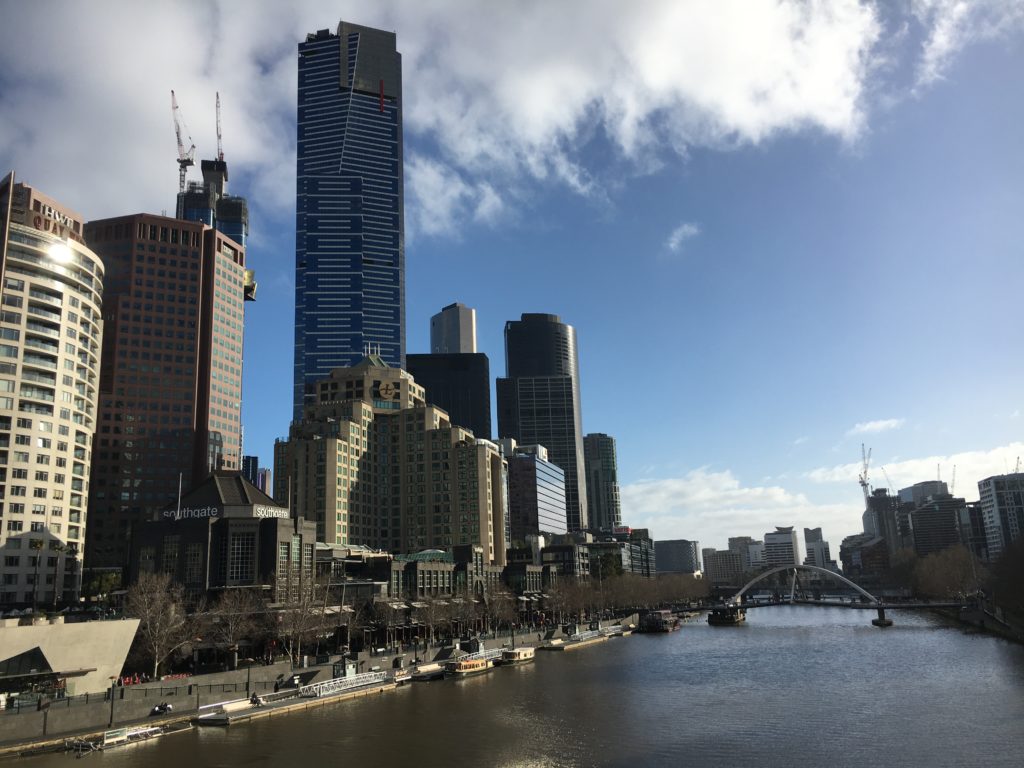




, By Yarra
Dr Erin O’Donnell is an internationally recognised water law and policy expert, a member of the Birrarung Council, and co-author, with Tati Tati Aboriginal Water Officer and academic Melissa Kennedy and Gulidjan Traditional Owner of Eastern Maar Peoples Brodey Hamilton, of Water is Life: Traditional Owner Access to Water Roadmap.
I arrive at Erin’s office on the University of Melbourne campus; our plan to meet at Birrarung Marr prevented due to the chance of rain. Erin, wearing Haus of Dizzy ‘Always Was Always Will Be Aboriginal Land’ earrings, offers me a cup of jasmine tea as I take out my notebook and a list of questions I know we won’t have time to get through.
In many ways, I’ve been preparing for this interview for years. I first encountered Erin’s work in 2019, in the early stages of my PhD research, and I’ve admired it since. Most recently, in an Australian Earth Laws Alliance (AELA) webinar, I was struck by a question Erin posed: ‘Can law operate as a mechanism of repair and bring us (back) into good relations with water?’ This is where our Love Stories conversation begins and ends.
During the webinar, I’d noticed Erin’s Zoom background featured the Birrarung, with a view towards the city from the botanic gardens. I begin by asking if this is a spot she likes to visit. ‘Yes! I go running along the Birrarung two or three times a week. And then every weekend my husband and I walk along it. The last time we walked for 12 km, the time before that for 20 km. We’ll walk along the Birrarung for as long as we can in different directions,’ she says.
‘When I was appointed to the Birrarung Council, it became clear to me—and probably to many of the members—that we needed to physically connect with the river as much as possible. We began opening meetings by talking about our last experience by the river, and this really accelerated the importance of the river in my own life.’

Photograph by Erin O’Donnell
‘It’s lovely feeling more connected to the Birrarung and spending so much time walking along it,’ she tells me. ‘You start to see biodiversity in action and get a sense of the ebbs and flows of the river—the way weather influences the number of birds you see, for example. You get a sense of how the river and its lands are interacting with everything that is there with them.’
So, how can a relationship with the environment translate into law? ‘The power of law in [Rights of Nature legislation] is that it is both shaped by and shapes our relationships,’ Erin says. ‘When we begin by acknowledging legal pluralism as part of a bigger conversation around treaty and Traditional Owner sovereignty, so that this legislation isn’t an appropriation of Traditional Owners’ ideas but works with them to produce something new, that brings settler colonial law into a novel space.’
There are complexities in recognising natural entities as legal persons, which Erin addresses in her book Legal Rights for Rivers: Competition, Collaboration and Water Governance (2018). It’s also important to acknowledge, as Wiradjuri Nyemba lawyer Dr Virginia Marshall reminds us, that any law that separates a river from its environment is contrary to First Peoples’ ways of being in, and knowing, the world.
And yet, for settler colonisers, like myself, learning to consider a river as a living entity through legislation can be a powerful way of entering into better relations with it, shifting from an understanding of a waterway as an economic resource to a sentient being.
This is what the Yarra Protection (Wilip-gin Birrarung murron) Act 2017 attempts to do, acknowledging the river as ‘one living and integrated natural entity’ to be protected. Significantly, the legislation is also Victoria’s first to include Woi-wurrung language in its title and preamble. It is the result of the collective lobbying efforts of the Yarra Riverkeeper Association and Environmental Justice Australia.
These organisations were concerned by the extended periods of inaction or ineffective planning as a response to protecting the river, seeking to develop measures to control or reduce the impacts of increased housing development along it. This included habitat destruction, improving water quality and creating consistent governance among the various councils and government agencies connected to the river.

Photograph by Erin O’Donnell.
‘Before the legislation passed, the river had always been Melbourne’s upside-down river,’ Erin says. Afterwards, she observed a significant shift in the relationship between settlers and the Birrarung, particularly in the CBD section of the river where she lives. ‘I saw the city shift towards the river; people embraced it even though it’s brown, even though it’s unhealthy. Realising that people love this river regardless of its health was a powerful moment for me.’
Before we finish, I ask Erin if she has a love story or special moment by the river she’d like to share. She drums her fingers on the table between us and pauses. ‘I feel like there’s a few. They’re little moments,’ she says. This is something I relate to—my sense of connection to the Birrarung isn’t formed around any particular experience, rather it’s an accumulation of the many encounters I’ve had with it since moving to Melbourne from Aotearoa New Zealand in 2013.
‘One day I was meeting with Wurundjeri Woi-wurrung at the Abbotsford Convent and I arrived early. So, I thought I’d go down and say hello to the river,’ Erin said. ‘I stood on the bank, looking at the water, and I imagined the river saying, “Wominjeka.”’
She continues, ‘This word has echoed in this place with this river for its entire lifetime. Standing on the riverbank and imagining it was a powerful insight into the Birrarung’s history and recognising that this river has been in a relationship with people since its beginning. Wurundjeri Woi-wurrung have the origin stories for this river and they have been with it since it became a river. Settlers have not been kind to it for the last 200 years but, having said that, I think the river would be lonely if people went away from it entirely.’
‘The Birrarung has never been without people. And while we haven’t done right by it, there’s an enormous opportunity to make that better; to build a better relationship with the river and bring ourselves back into good relations with it. The river wants us to do that.’

Photograph by Erin O’Donnell.
I think back to the panel So What If… Melbourne Was Underwater?, in which Andi Horvath was in conversation with Erin, David Sornig and Karen White. The discussion was quickly framed around the idea that Melbourne was already underwater, which shifted my thinking about water and waterways in an important way. I’d naively assumed the conversation would be speculative, regular flooding events a distant concern connected to climate change. But, as I sat in the Wheeler Centre’s Performance Space, I remembered photographs I’d seen of flash flooding in Elizabeth Street in 1972: water gushing over cars, people taking shelter on the steps of the post office. Prompted by the event and my memory of the black-and-white pictures, I considered the ways water runs over and under Melbourne, a settler colonial city constructed in the image of the metropole. Underneath Elizabeth Street, for example, is Williams Creek. The waterway is restricted by a drain and meets the Birrarung near Flinders Street Station. We are always in a relationship with water—our bodies are watery. Erin’s work, deeply influenced by Indigenous Elders and scholars, is a powerful call to those of us who are settlers to rebuild our relations with waterways, beyond control and extraction.
Love your river, support your Riverkeeper by becoming a member or with a one-off or monthly donation.
Story by Christine McFetridge